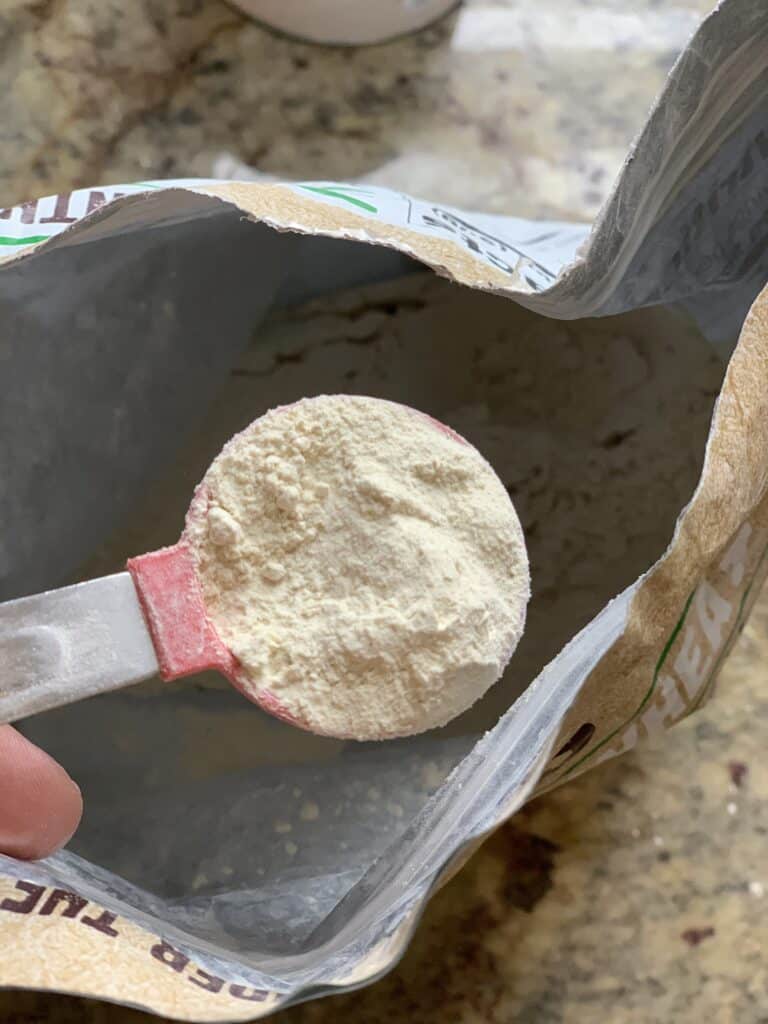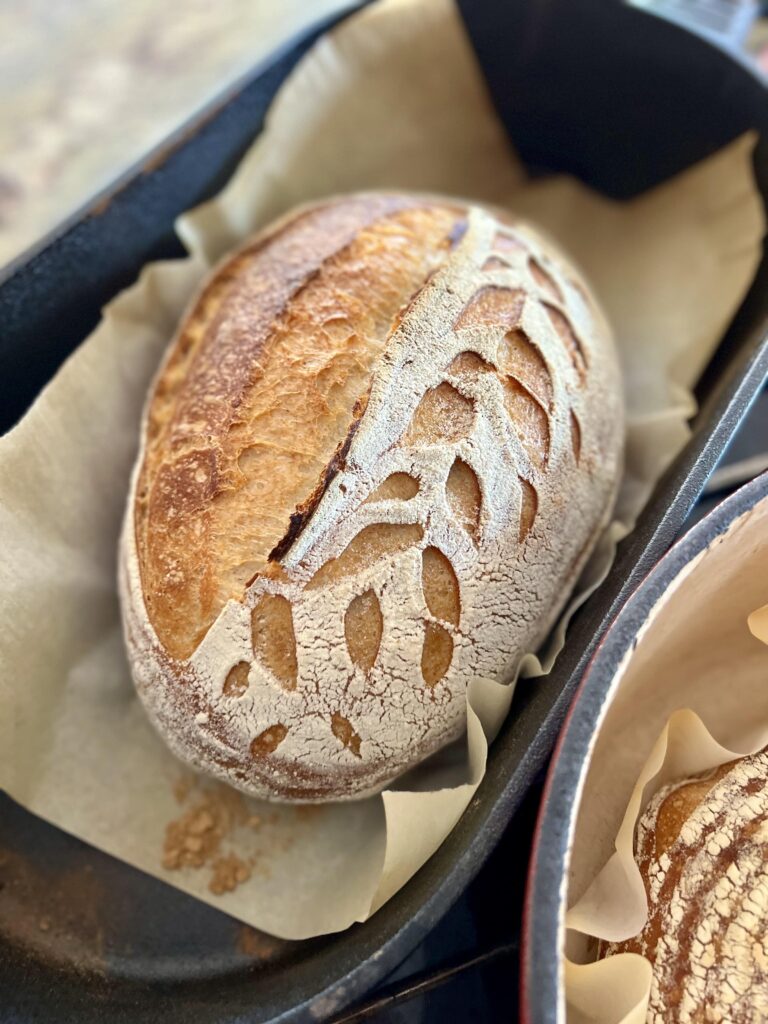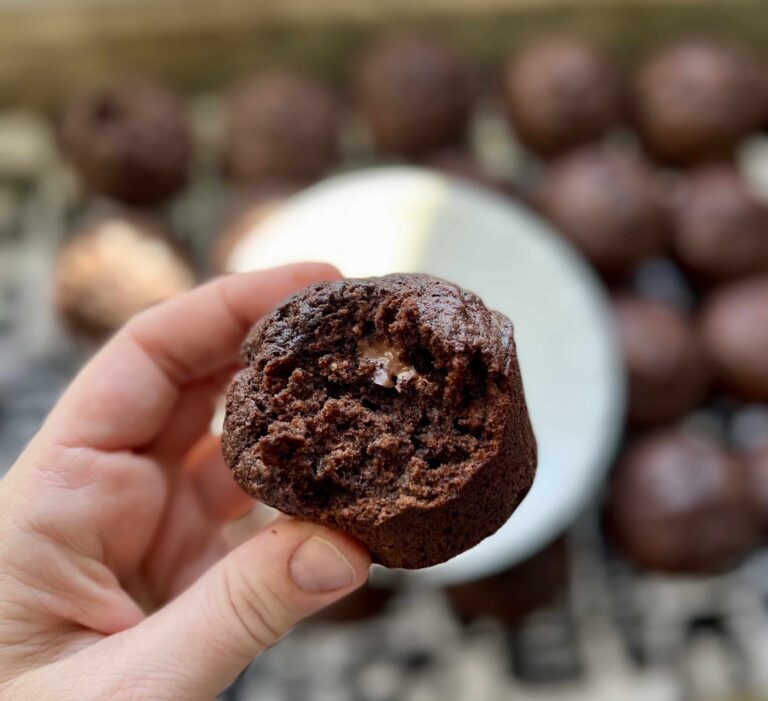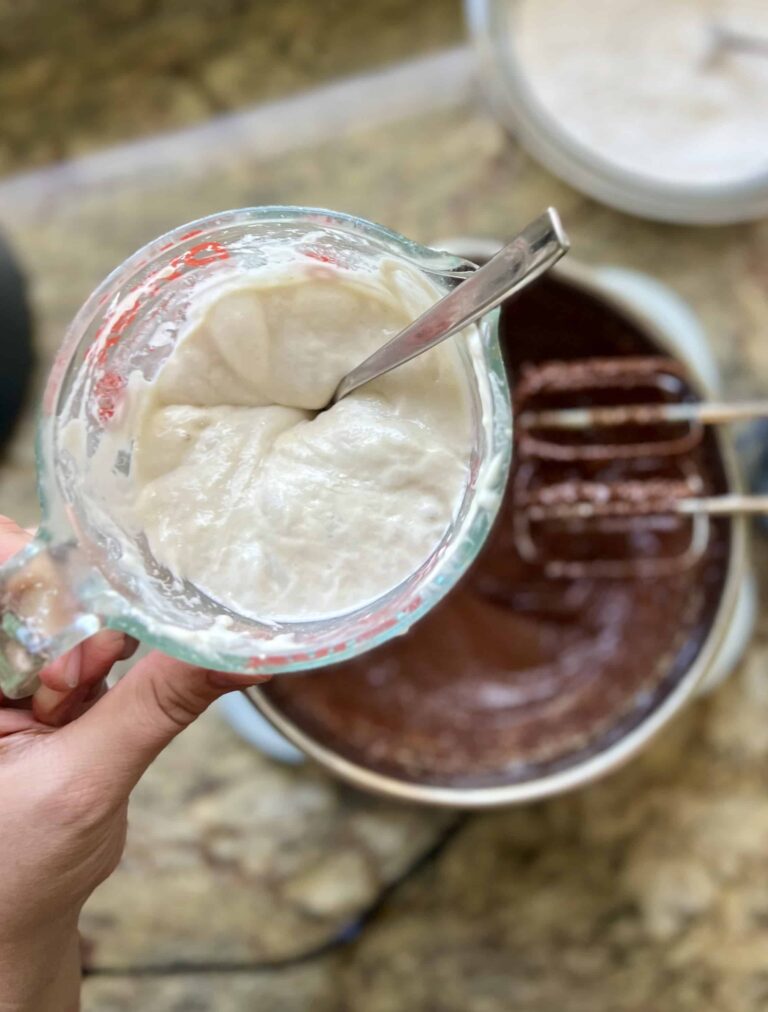How to Replace Yeast with Sourdough Starter
This post may contain affiliate links. Please read our disclosure policy.We all have favorite recipes we’ve grown up with and love. Recipes that evoke memories and ones we want to pass down to our families, generations upon generations. So what happens when we want to take those recipes and turn them into a sourdough version? Can you do it? Of course you can! Any dough that is made with commercial yeast can be turned into a sourdough recipe using natural yeast as the leavening agent instead of commercial yeast. Here is how to replace yeast with sourdough starter (natural yeast).

Case and point…my family favorite cinnamon rolls that I converted into a sourdough version!
Here’s How To Replace Yeast with Sourdough Starter
1. First, take a look at the recipe. How much flour and water are called for?
If your recipe uses cups, I recommend converting the recipe to grams. Take special note of the amount of flour in the recipe. Calculations will be made in relation to the flour amount.
Example: Recipe calls for 500 grams flour and 350 grams water
2. Replace commercial yeast with 15-20% sourdough starter.
For the best flavor and fermentation schedule, I like to use 15-20% starter in my recipes. You can play around with these percentages to fit your flavor profile and timeline. My soft sourdough sandwich bread, for example, has a larger amount of starter for a more mild-flavored sourdough.
Example: The recipe calls for 500 grams flour.
500 grams X .2 (20%) = 100 grams of starter
This is the amount of starter I need to put in my recipe to substitute for the commercial yeast.
3. Calculate how much flour and water makes up the starter.
Example: My starter is fed equal parts flour and water, so 100 grams of starter is made up of 50 grams flour and 50 grams water.


4. Adjust the flour and water in the recipe to account for the added sourdough starter.
Example: The original recipe calls for 500 grams flour, 350 grams water and 1 package commercial yeast. I subtract 50 grams flour and 50 grams water from the original recipe to make up for the starter and leave out the commercial yeast.
The new recipe with the sourdough starter is now: 450 grams flour, 300 grams water and 100 grams starter.
5. Add extra time for bulk fermentation.
Your original recipe most likely took about an hour for the first rise. The “first rise” or bulk fermentation as we call it in sourdough, will take much longer to ferment. Recipes that have about 15-20% sourdough starter, typically take about 4-5 hours for the bulk fermentation. Do not expect the dough to double in size. It will feel aerated and will have risen maybe 20-30%, assuming the dough is kept at 78-80 degrees F.
Example: I knead my dough and begin bulk fermentation. I keep the dough warm (78-80 degrees F) for 4-5 hours.
6. Add extra time after shaping the dough for proofing.
It usually takes 2-4 hours of my shaped dough to rise again at warm room temperature (80-mid 80 degrees F). You will know the dough has properly proofed when it is light, airy, jiggly and doubled in size. Do not bake the dough unless it is showing these signs. You can also press in on the dough and if the dough springs back just a little bit and the indentation stays, your recipe is ready to bake.





It doesn’t matter if it’s water or not, you need to find some liquid in the recipe to replace the liquid in the starter with. That may be milk instead of water. That’s okay! Just make the substitution for any liquid.
And there you have it! You can turn any recipe into a natural yeast recipe by following these easy steps. I think it’s worth converting recipes from commercial yeast to sourdough just for the health benefits alone. But if that’s not a good enough reason, the taste is exceptional! If you haven’t tried my favorite sourdough cinnamon rolls or these amazing sourdough bagels, you’ll understand just how good they taste!
Looking for Amazing Natural Yeast Sourdough Recipes?
Sourdough Beginner Guide
Want more in-depth Sourdough instruction?
Check out my online sourdough classes or take a class in person.







I really do prefer sourdough now that you’ve converted me! Thank you! 👩🏼🍳😋🍞
what if the amount of liquid in the sourdough exceeds that specified in the recipe?
That’s where it gets a little tricky. I often see this in cookie recipes. I end up taking out an egg or adding a little extra flour to compensate if there is too much liquid to replace in the recipe.